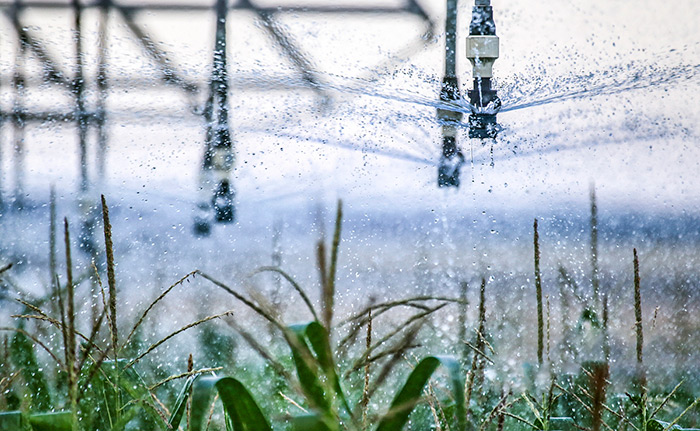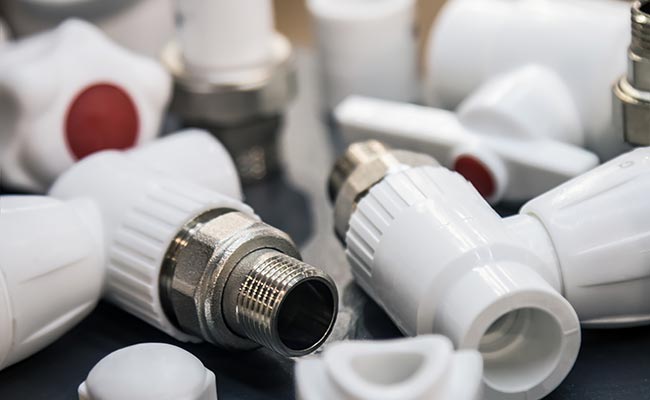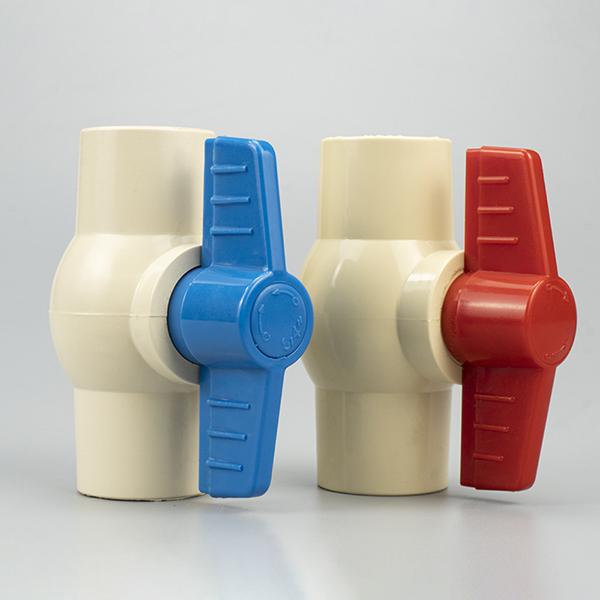
A บอลวาล์ว CPVCโดดเด่นในวงการประปาเพราะใช้วัสดุ CPVC ที่แข็งแรงและระบบปิดผนึกอัจฉริยะ ดีไซน์นี้ช่วยป้องกันการรั่วซึมแม้แรงดันน้ำจะเปลี่ยนแปลง ผู้คนไว้วางใจในบ้านและโรงงาน เพราะช่วยกักเก็บน้ำไว้ในที่ที่ควรอยู่ นั่นคือภายในท่อ
ประเด็นสำคัญ
- วาล์วลูกบอล CPVC ใช้วัสดุที่แข็งแรงและซีลอัจฉริยะเพื่อหยุดการรั่วไหลและควบคุมการไหลของน้ำอย่างรวดเร็วและเชื่อถือได้
- การติดตั้งอย่างถูกต้องและการบำรุงรักษาสม่ำเสมอจะช่วยให้วาล์วทำงานได้ดีและป้องกันการรั่วไหลในระยะยาว
- วัสดุ CPVC ทนต่อความร้อน สารเคมี และแรงดันได้ดีกว่าพลาสติกชนิดอื่น ทำให้วาล์วเหล่านี้มีความทนทานและป้องกันการรั่วซึม
การออกแบบและการป้องกันการรั่วไหลของบอลวาล์ว CPVC
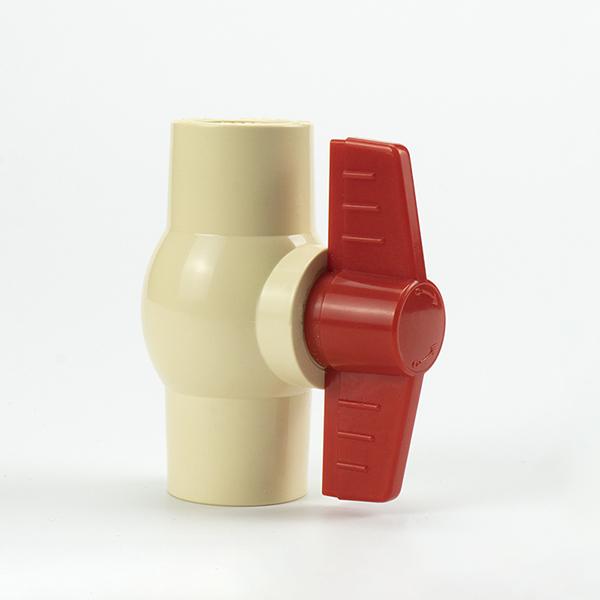
บอลวาล์ว CPVC ทำงานอย่างไร
บอลวาล์ว CPVC ใช้การออกแบบที่เรียบง่ายแต่มีประสิทธิภาพ ภายในวาล์วมีลูกบอลกลมที่มีรูอยู่ตรงกลาง เมื่อมีคนหมุนที่จับ ลูกบอลจะหมุนหนึ่งในสี่รอบ หากรูตรงกับท่อ น้ำจะไหลผ่าน หากลูกบอลหมุนจนรูอยู่ด้านข้าง จะปิดกั้นการไหล การทำงานที่รวดเร็วนี้ทำให้เปิดหรือปิดวาล์วได้ง่าย
ก้านวาล์วเชื่อมต่อด้ามจับกับลูกบอล วงแหวนซีลและหน้าแปลนช่วยปิดผนึกก้านวาล์ว ป้องกันการรั่วซึมบริเวณที่ด้ามจับเชื่อมต่อกับวาล์ว บอลวาล์วบางรุ่นใช้ลูกบอลลอยน้ำ ซึ่งจะเคลื่อนที่เล็กน้อยเพื่อกดกับบ่าวาล์วและสร้างการปิดผนึกที่แน่นหนา ในขณะที่บางรุ่นใช้ลูกบอลแบบยึดกับแกนวาล์ว ซึ่งจะยึดแน่นและทำงานได้ดีในระบบแรงดันสูง การออกแบบเหล่านี้ช่วยให้บอลวาล์ว CPVC สามารถควบคุมการไหลของน้ำและป้องกันการรั่วซึมได้ในหลายสถานการณ์
การทำงานเพียงหนึ่งในสี่รอบทำให้ผู้ใช้สามารถปิดน้ำได้อย่างรวดเร็วในกรณีฉุกเฉิน ลดความเสี่ยงต่อการรั่วไหลหรือความเสียหายจากน้ำ
กลไกการปิดผนึกและความสมบูรณ์ของเบาะนั่ง
ระบบปิดผนึกในบอลวาล์ว CPVC มีบทบาทสำคัญในการป้องกันการรั่วซึม วาล์วใช้บ่าวาล์วที่แข็งแรง ผลิตจากวัสดุอย่าง PTFE หรือยาง EPDM บ่าวาล์วเหล่านี้จะแนบสนิทกับลูกบอล ทำให้เกิดชั้นป้องกันการรั่วไหล แม้ในขณะที่วาล์วเปิดและปิดหลายครั้ง บ่าวาล์วก็ยังคงรูปทรงและความแข็งแรงไว้ได้
ผู้ผลิตมักเพิ่มซีลโอริงคู่หรือวัสดุกันกระแทกพิเศษรอบแกนวาล์ว คุณสมบัติเหล่านี้ช่วยป้องกันไม่ให้น้ำรั่วซึมตรงจุดที่แกนวาล์วหมุน ยางอีลาสโตเมอร์แบบยืดหยุ่นหรือวัสดุกันกระแทก PTFE สามารถปรับตามการเปลี่ยนแปลงของอุณหภูมิและความดัน ทำให้ซีลแน่นหนา วาล์วบางชนิดมีรูระบายอากาศที่ลูกบอลเพื่อระบายแรงดันที่กักไว้ ซึ่งช่วยป้องกันการรั่วไหลหรือการระเบิด
การทดสอบแสดงให้เห็นว่าวัสดุและบรรจุภัณฑ์ที่เหมาะสมสามารถรองรับการเปิดและปิดได้หลายพันรอบ แม้หลังจากผ่านการใช้งานเนื่องจากความร้อนหรือแรงดันเปลี่ยนแปลง วาล์วก็ยังคงลดการรั่วไหลให้น้อยที่สุด การออกแบบที่พิถีพิถันนี้ทำให้บอลวาล์ว CPVC ยังคงทำงานได้อย่างน่าเชื่อถือทั้งในบ้านและโรงงาน
ข้อดีของวัสดุสำหรับการต้านทานการรั่วไหล
วัสดุที่ใช้ในบอลวาล์ว CPVC ทำให้มีข้อได้เปรียบเหนือวาล์วประเภทอื่นๆ อย่างมาก CPVC ย่อมาจาก Chlorinated Polyvinyl Chloride วัสดุนี้ทนทานต่อการกัดกร่อน ความร้อน และสารเคมีได้ดีกว่าพลาสติกอื่นๆ หลายชนิด นอกจากนี้ยังมีอัตราการซึมผ่านของก๊าซและของเหลวต่ำ ซึ่งช่วยป้องกันการรั่วไหลก่อนที่จะเกิดขึ้น
ต่อไปนี้เป็นการดูอย่างรวดเร็วว่า CPVC เปรียบเทียบกับวัสดุวาล์วทั่วไปอื่นๆ ได้อย่างไร:
| วัสดุ | ความทนทานและป้องกันการรั่วซึม | คุณสมบัติหลัก |
|---|---|---|
| ซีพีวีซี | ทนทานต่อความร้อน สารเคมี และแรงดันสูง มีค่าการซึมผ่านต่ำ อายุการใช้งานยาวนาน | ทนอุณหภูมิได้ถึง 200°F ทนกรดและเบส ดับไฟเองได้ |
| พีวีซี | เหมาะสำหรับน้ำเย็น แต่ทนทานต่ออุณหภูมิสูง | สูงสุด 140°F; ปริมาณคลอรีนต่ำกว่า; ไม่เหมาะสำหรับน้ำร้อน |
| พีเอ็กซ์ | มีความยืดหยุ่นแต่สามารถเสื่อมสภาพลงได้ตามกาลเวลา | ต้องมีสารเติมแต่ง อาจหย่อนหรือรั่วซึมเมื่อโดนความร้อน |
| พีพี-อาร์ | เสี่ยงต่อการแตกร้าวจากคลอรีน อายุการใช้งานสั้น | ราคาแพงกว่า ทนทานต่อสภาวะที่รุนแรงน้อยลง |
ปริมาณคลอรีนที่สูงกว่าของ CPVC ช่วยปกป้องโครงสร้าง ทนทานต่อสารเคมีรุนแรงและอุณหภูมิสูง จึงเป็นตัวเลือกที่ดีสำหรับการป้องกันการรั่วซึมบอลวาล์ว CPVC PNTEKใช้สารนี้เพื่อให้มีประสิทธิภาพที่แข็งแกร่งและยาวนานในระบบประปาหลายประเภท
บอลวาล์ว CPVC ในการใช้งานจริง
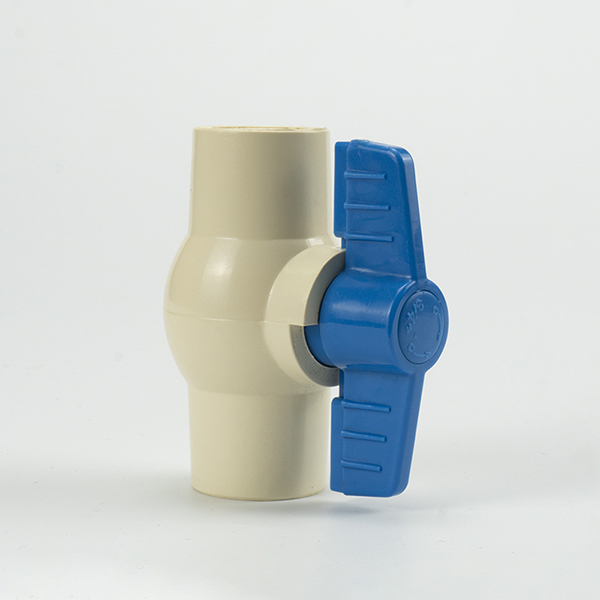
การเปรียบเทียบกับวาล์วประเภทอื่น
ผู้คนมักสงสัยว่าบอลวาล์ว CPVC เทียบกับวาล์วอื่นๆ ได้อย่างไร ในระบบประปาหลายๆ ระบบ วาล์วผีเสื้อและวาล์วเช็คมักเป็นทางเลือกทดแทน วาล์วผีเสื้อมีน้ำหนักเบาและติดตั้งง่าย แต่ซีลไม่ได้แน่นหนาเท่า เช็ควาล์วช่วยป้องกันการไหลย้อนกลับ แต่ไม่สามารถควบคุมการไหลได้อย่างแม่นยำ การศึกษาทางเทคนิคแสดงให้เห็นว่าบอลวาล์ว CPVC ทำงานได้ดีในระบบไฮดรอลิกแรงดันต่ำ พวกมันเปิดและปิดได้อย่างรวดเร็ว แม้ในอุณหภูมิและแรงดันสูง วิศวกรให้ความสำคัญกับการออกแบบบ่าวาล์วและบอลวาล์วเพื่อลดการรั่วซึม ความใส่ใจในรายละเอียดนี้ช่วยให้บอลวาล์ว CPVC ปิดผนึกได้อย่างน่าเชื่อถือและมีประสิทธิภาพยาวนาน
เคล็ดลับการติดตั้งเพื่อประสิทธิภาพที่ปราศจากการรั่วซึม
การติดตั้งอย่างถูกต้องสร้างความแตกต่างอย่างมาก ผู้ติดตั้งควรตรวจสอบวาล์วว่าเสียหายหรือไม่ก่อนใช้งาน พวกเขาจำเป็นต้องทำความสะอาดปลายท่อและตรวจสอบให้แน่ใจว่าวาล์วเข้าที่พอดี การใช้เครื่องมือที่เหมาะสมจะช่วยป้องกันรอยแตกหรือแรงกดบนตัววาล์ว ผู้ติดตั้งควรขันข้อต่อให้แน่นพอประมาณเพื่อปิดผนึก แต่ไม่มากเกินไปจนทำให้เกลียวเสียหาย เคล็ดลับที่ดี: ปฏิบัติตามคำแนะนำของผู้ผลิตเสมอเพื่อผลลัพธ์ที่ดีที่สุด วิธีการนี้จะช่วยป้องกันการรั่วซึมตั้งแต่เริ่มต้น
การบำรุงรักษาเพื่อความน่าเชื่อถือในระยะยาว
การดูแลรักษาอย่างสม่ำเสมอจะช่วยให้บอลวาล์ว CPVC ใช้งานได้นานหลายปี ผู้เชี่ยวชาญหลายท่านแนะนำขั้นตอนเหล่านี้:
- ตรวจสอบวาล์วบ่อยๆ โดยเฉพาะวาล์วที่ใช้งานบ่อยหรือสัมผัสกับสารเคมี
- ใช้สารหล่อลื่นที่มีส่วนประกอบเป็นซิลิโคนเพื่อปกป้องชิ้นส่วนที่เคลื่อนไหว
- ตรวจสอบการรั่วไหล สกรูหลวม หรือเสียงแปลกๆ
- ปรับการบรรจุก้านหากจำเป็นเพื่อให้ซีลแน่น
- เก็บวาล์วสำรองไว้ในสถานที่แห้งและสะอาด
- ฝึกอบรมคนงานให้ใช้งานวาล์วอย่างถูกวิธี
กรณีศึกษาจาก Max-Air Technology แสดงให้เห็นว่าบอลวาล์ว CPVC ทำงานได้ดีในระบบที่มีคลอรีนสูง วาล์วเหล่านี้ทนทานต่อการกัดกร่อนและทำงานได้อย่างต่อเนื่องแม้ในสภาวะที่ยากลำบาก หากดูแลรักษาอย่างถูกต้อง บอลวาล์ว CPVC จะใช้งานได้ยาวนานและป้องกันการรั่วไหลของระบบประปา
งานวิจัยแสดงให้เห็นว่าบอลวาล์ว CPVC มีประสิทธิภาพในการป้องกันการรั่วไหลและควบคุมการไหลได้อย่างมีประสิทธิภาพ วัสดุที่แข็งแรงทนทานและการออกแบบที่ชาญฉลาดช่วยให้มีประสิทธิภาพเหนือกว่าวาล์วอื่นๆ ในบ้านและโรงงาน ด้วยการติดตั้งและดูแลรักษาอย่างถูกต้อง ผู้ใช้งานจึงมั่นใจได้ว่าระบบประปาจะใช้งานได้ยาวนานและปราศจากการรั่วไหลทุกวัน
คำถามที่พบบ่อย
PNTEK CPVC Ball Valve หยุดการรั่วไหลได้อย่างไร?
วาล์วใช้วัสดุ CPVC ที่แข็งแรงและซีลที่แน่นหนา คุณสมบัติเหล่านี้ช่วยกักเก็บน้ำไว้ในท่อและช่วยป้องกันการรั่วซึมได้ในหลายสถานการณ์
มีใครสามารถติดตั้ง CPVC Ball Valve โดยไม่ต้องใช้เครื่องมือพิเศษได้หรือไม่?
ใช่ คนส่วนใหญ่ทำได้ติดตั้งด้วยเครื่องมือประปาพื้นฐานการออกแบบน้ำหนักเบาและการเชื่อมต่อที่เรียบง่ายทำให้กระบวนการรวดเร็วและง่ายดาย
ควรตรวจสอบหรือบำรุงรักษาวาล์วบ่อยเพียงใด?
ผู้เชี่ยวชาญแนะนำให้ตรวจสอบวาล์วทุกๆ สองสามเดือน การตรวจสอบเป็นประจำจะช่วยตรวจพบปัญหาเล็กๆ น้อยๆ ได้ตั้งแต่เนิ่นๆ และทำให้ระบบทำงานได้อย่างราบรื่น
เวลาโพสต์: 24 มิ.ย. 2568


